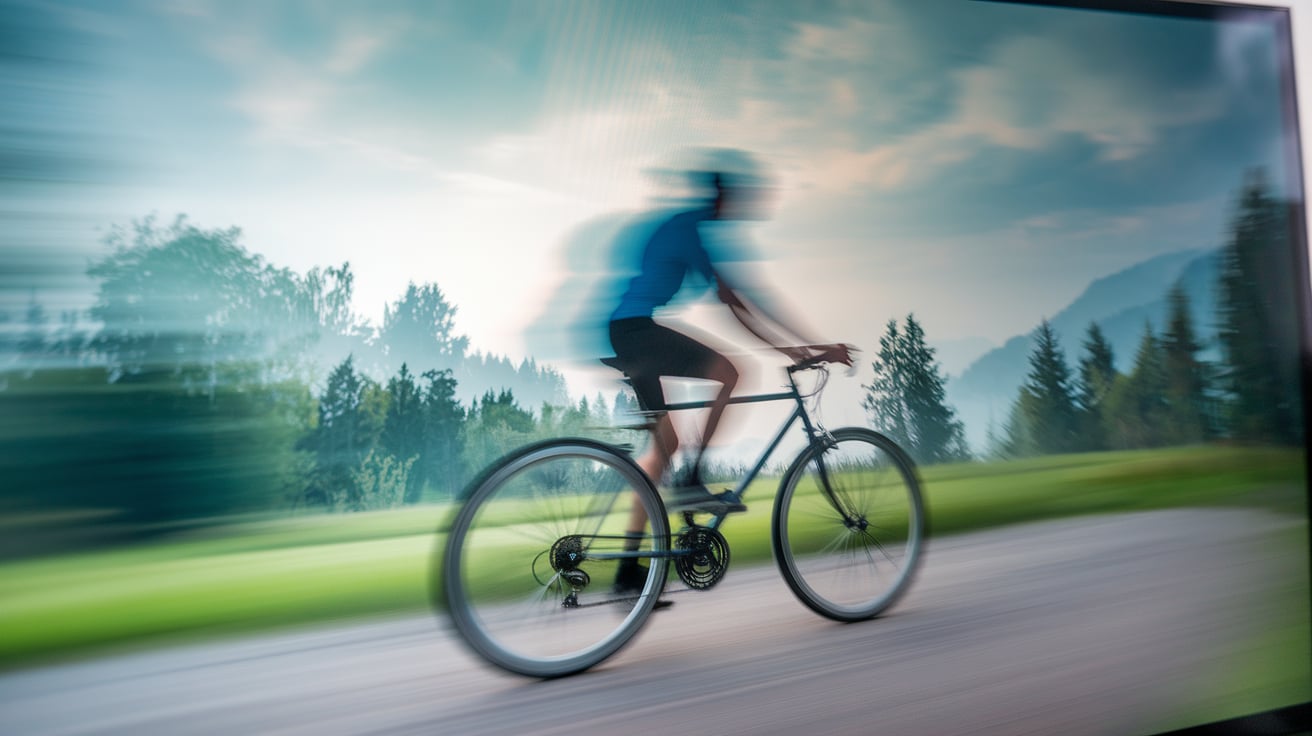Motion blur is an effect we encounter daily, from movies and photography to games and even virtual reality. This visual phenomenon is particularly noticeable when fast-moving objects appear blurry as they move across our field of vision. While it’s often created deliberately in digital media, motion blur also occurs naturally in our perception of fast-moving objects. This article explores what motion blur is, why it happens, and how it’s applied across different fields. By understanding its mechanics and uses, you can better appreciate its impact on our visual experiences.
What is Motion Blur ?
Motion blur occurs when a moving object leaves a trail of blurry images as it travels across a screen or through our field of view. The effect results from the way our eyes perceive motion, combined with the limitations of capture devices, like cameras. When an object moves quickly and the shutter speed of a camera is too slow, that object will appear blurred in the resulting image. This happens because the camera captures the object’s position over a period rather than freezing it in one instant. The result is a smeared effect that shows the object’s motion over time.
Why Does Motion Blur Occur ?
Motion blur has two main sources: our natural perception and camera or screen limitations.
- Human Perception of Motion
Our eyes and brain naturally experience a form of motion blur. When we look at a moving object, our eyes attempt to track it, but our perception can’t capture a perfectly sharp image at every moment. As a result, anything moving too quickly within our field of view appears blurred, giving us a smoother sense of movement. - Limitations in Cameras and Screens
In digital media, motion blur is largely a result of shutter speed or the frame rate. Cameras with slower shutter speeds can’t capture fast-moving objects as a clear, frozen image. Instead, they capture a series of frames that blend together, creating the blurred effect.In screens and gaming, if the frame rate is too low to keep up with fast-moving objects, these objects will appear blurred or streaked.
Applications of Motion Blur in Different Media
Motion blur can enhance the realism and emotional impact of visual media. Here’s how it’s applied across various fields:
1. Photography
Photographers use motion blur creatively to convey movement and emotion in still images. By adjusting the shutter speed, they can create effects like the blurred flow of water or the rush of city lights at night. Motion blur in photography adds a dynamic element to static images, making them more expressive and visually engaging.
2. Film and Animation
Motion blur is essential in movies and animations to create a natural sense of motion. When we watch high-speed action scenes, a lack of motion blur would make the movements appear too choppy or unrealistic. By adding this blur, filmmakers replicate the way we perceive fast motion, which gives the visuals a smoother and more immersive quality.
3. Video Games
In gaming, motion blur is used to mimic real-life movement. Some players enjoy this effect as it adds depth and realism, especially in first-person and racing games. However, others find it distracting, as it can make fast-paced games harder to follow. Many games include an option to toggle motion blur on or off to suit player preferences.
4. Virtual Reality (VR)
In VR, motion blur plays a crucial role in minimizing the discomfort some users experience, known as motion sickness. By incorporating slight motion blur, VR developers can reduce the sharpness of high-speed movements, creating a smoother and less jarring experience.
5. User Interfaces and UX Design
Motion blur has found a place in user experience (UX) design, particularly with transitions and animations in applications. For example, when switching between screens or opening menus, a subtle motion blur effect can make the transition appear smoother and more intuitive.
Pros and Cons of Motion Blur
Pros
- Adds Realism: By mimicking natural vision, motion blur gives visuals a lifelike quality.
- Conveys Speed and Motion: Especially useful in action sequences, motion blur visually communicates rapid movement and action.
- Enhances Aesthetic Appeal: Photographers and filmmakers use motion blur to create unique visual effects that can evoke emotion and atmosphere.
Cons
- Can Cause Motion Sickness: For some viewers, too much motion blur can lead to dizziness or nausea, especially in VR.
- Decreases Clarity: In games or fast-paced movies, excessive blur may obscure details, making it difficult to follow what’s happening.
- Not Always Needed: In certain applications, like slow-paced scenes or UI/UX transitions, too much motion blur can feel artificial or distracting.
How to Adjust Motion Blur Settings ?
Depending on your preferences and the device you’re using, you may want to adjust motion blur for the best experience. Here’s how:
- On Cameras: Adjust the shutter speed to control motion blur. A slower shutter speed captures more blur, while a faster speed reduces it.
- In Games: Most games allow players to turn motion blur on or off. Some even provide adjustable intensity settings. If you’re playing a fast-paced game, consider reducing or disabling motion blur for a sharper view.
- In VR Headsets: Motion blur settings are usually fixed to provide a balance between realism and user comfort, but you can reduce other settings (like frame rate) to decrease the effects of blurring.
Conclusion
Motion blur is a captivating visual effect that can enhance immersion in film, photography, and even gaming. However, understanding technical aspects, such as the frame rate (FPS), is essential to control its impact. Low FPS can amplify the blur effect, sometimes reducing image clarity. For gamers and tech enthusiasts, optimizing FPS can help achieve a smoother experience with balanced motion blur, offering both immersion and visual clarity.
